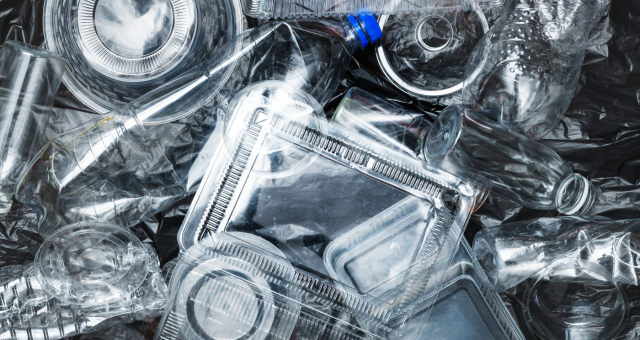Medically Reviewed by Lucas Rosa, PhD in Molecular Biology
Dioxins are among the most dangerous environmental pollutants, with serious consequences for human health and hormonal balance.
These toxic compounds are byproducts of industrial processes, primarily released through waste incineration, chemical manufacturing, and even some food processing methods. Once in the body, dioxins accumulate in fat tissue and remain there for years, continuously interfering with hormonal regulation.
Where Do Dioxins Come From?
Dioxins are highly toxic chemical substances that are classified as persistent organic pollutants even at low levels of exposure. These chemicals don’t break down quickly. Instead, they remain in the environment and bioaccumulate in the food chain. (1)
Sources of Dioxin Exposure
- Industrial Waste and Incineration: Factories that burn plastics, chlorine-containing materials, or chemical waste release dioxins into the air.
- Pesticides and Herbicides: Some agricultural chemicals, like Agent Orange, contain dioxins which leave long-lasting contamination in soil and water.
- Food Contamination: Dioxins accumulate in fatty tissues of animals, so people are mainly exposed through meat, dairy, fish, and eggs.
- Paper Bleaching: The chlorine-based process used in making white paper products (e.g., napkins, tissues, and tampons) can produce dioxin residues.

Dioxins and Thyroid Hormone Disruption
Thyroid hormones play a key role in metabolism, energy production, brain function, and temperature regulation. However, dioxins can interfere with these hormones in multiple ways: (2)
- Blocking Thyroid Hormone Receptors: Dioxins can bind to thyroid hormone receptors, preventing proper hormone activation. This can result in hypothyroidism symptoms like fatigue, weight gain, mental fog, and depression.
- Disrupting T3 and T4 Levels: Dioxins disrupt the conversion of T4 (inactive thyroid hormone) into T3 (active thyroid hormone), leading to decreased metabolic efficiency and lower energy production.
- Impairing Iodine Uptake: The thyroid needs iodine to produce hormones, but dioxins may reduce iodine absorption, further impairing thyroid function.
- Affecting Thyroid Development: Pregnant women exposed to dioxins can pass these toxins to their unborn babies, affecting fetal brain development and increasing the risk of congenital hypothyroidism.
Dioxins and Estrogen-Testosterone Imbalance
Dioxins are known to be estrogenic compounds, meaning that they mimic estrogen in the body. This can lead to hormonal imbalances in both men and women. (3)
Effects on Estrogen
- Increases Estrogen Activity: Dioxins act as xenoestrogens, binding to estrogen receptors and overstimulating estrogenic activity. This increases the risk of endometriosis, fibroids, and breast cancer.
- Disrupts Menstrual Cycles: Women with high dioxin exposure may experience irregular periods, heavier bleeding, or early menopause.
- Raises Risk of Estrogen-Related Cancers: Long-term dioxin exposure is linked to higher rates of breast, ovarian, and endometrial cancers.
Effects on Testosterone
- Lowers Testosterone Production: Dioxins interfere with Leydig cells in the testes, reducing testosterone levels and leading to symptoms such as low libido, fatigue, and muscle loss.
- Reduces Sperm Quality: Studies have linked dioxin exposure to lower sperm count, poor motility, and increased DNA damage in sperm, leading to infertility.
- Promotes Feminization: Because dioxins increase estrogenic activity while lowering testosterone, they may contribute to conditions such as gynecomastia (male breast enlargement) and reduced fertility.
Dioxins Impact on Adrenal Function
The adrenal glands secrete hormones such as cortisol, adrenaline, and aldosterone, which help manage stress, regulate blood pressure, and maintain electrolyte balance. However, dioxins can interfere with adrenal hormone production and lead to chronic stress-related disorders. (4)
Dioxins can affect adrenal glands by:
- Cortisol Dysregulation: Exposure to dioxins may cause excess cortisol production (leading to chronic stress, high blood sugar, and insomnia) or low cortisol production (causing fatigue, dizziness, and depression).
- Impaired Aldosterone Levels: Aldosterone regulates blood pressure and hydration. Dioxins can interfere with aldosterone function, potentially causing low blood pressure, dehydration, and electrolyte imbalances.
- Increases Risk of Autoimmune Disorders: Because adrenal function is closely linked to the immune system, dioxins could trigger autoimmune conditions like Addison’s disease.
Dioxins Links to Metabolic Disorders
Dioxins directly interfere with metabolic function, increasing the risk of obesity, insulin resistance, and type 2 diabetes. (5)
Dioxins can interfere by:
- Altering Insulin Sensitivity: Dioxins interfere with pancreatic beta cells, reducing insulin production and leading to high blood sugar levels.
- Promoting Fat Storage: Dioxins interfere with fat metabolism, leading to increased fat storage, particularly in the abdominal area.
- Increasing Inflammation: Chronic dioxin exposure is associated with higher inflammation markers, which contribute to metabolic syndrome and cardiovascular diseases.

How to Reduce Dioxin Exposure
Since dioxins accumulate in fatty tissues and remain in the body for years, reducing exposure is crucial for health. Here are ways to reduce:
- Eat Organic Meat and Dairy: Choose organic, grass-fed meat and dairy to minimize dioxin intake. Avoid fast foods, processed meats, and high-fat dairy.
- Reduce Plastic Use: When heated, dioxins can seep from plastics. Opt for glass or stainless steel containers for safer food storage.
- Filter Your Water: Certain water sources may contain dioxin residues. Using a high-quality water filter can help minimize exposure.
- Increase Detoxifying Foods: Support dioxin elimination by consuming cruciferous vegetables (broccoli, kale, Brussels sprouts), turmeric, and fiber-rich foods.
- Maintain a Healthy Weight: Since dioxins are stored in fat, maintaining a healthy body fat percentage helps reduce toxin accumulation.
- Practice Regular Sweating: Sweat helps eliminate dioxins. Engage in regular exercise, sauna therapy, or hot baths to promote detoxification.

Conclusion
Dioxins are among the most harmful endocrine disruptors, affecting thyroid function, reproductive hormones, adrenal balance, and metabolism. Since these toxins persist in the environment and accumulate in fatty tissues, avoiding exposure is key to protecting long-term health.
By making informed choices – such as eating cleaner, avoiding plastics, and supporting detoxification – you can reduce dioxin buildup and safeguard your hormone health and overall well-being.
References
- NIH. “Dioxins.” National Institute of Environmental Health Sciences, 27 July 2023, www.niehs.nih.gov/health/topics/agents/dioxins .
- Pham The T, Nishijo M, Phan Van M, Nguyen Minh P, Pham Ngoc T, Vu Thi H, Nguyen Van C, Tran Ngoc N, Do Minh T, Dao Duc L, Tran Ngoc T, Trinh The S, Nishijo H. Effects of dioxin exposure on reproductive and thyroid hormone levels and male sexual function in airbase military workers in Vietnam. Environ Sci Pollut Res Int. 2024 Jul;31(35):47644-47654. doi: 10.1007/s11356-024-34364-w. Epub 2024 Jul 13. PMID: 39002082. https://pubmed.ncbi.nlm.nih.gov/39002082/.
- Onogawa, Tsukuba, Ibarak. The Effects of Dioxin on Reproduction and Development. National Institute for Environmental Studies, 16–2, 305-0053, Japan. https://www.jstage.jst.go.jp/article/indhealth1963/38/3/38_3_259/_pdf.
- White SS, Birnbaum LS. An overview of the effects of dioxins and dioxin-like compounds on vertebrates, as documented in human and ecological epidemiology. J Environ Sci Health C Environ Carcinog Ecotoxicol Rev. 2009 Oct;27(4):197-211. doi: 10.1080/10590500903310047. PMID: 19953395; PMCID: PMC2788749. https://pmc.ncbi.nlm.nih.gov/articles/PMC2788749/.
- Uemura H, Arisawa K, Hiyoshi M, Kitayama A, Takami H, Sawachika F, Dakeshita S, Nii K, Satoh H, Sumiyoshi Y, Morinaga K, Kodama K, Suzuki T, Nagai M, Suzuki T. Prevalence of metabolic syndrome associated with body burden levels of dioxin and related compounds among Japan’s general population. Environ Health Perspect. 2009 Apr;117(4):568-73. doi: 10.1289/ehp.0800012. Epub 2008 Oct 10. PMID: 19440495; PMCID: PMC2679600. https://pmc.ncbi.nlm.nih.gov/articles/PMC2679600/.
Check Out
HF Swaps
Better products for better hormone health.









